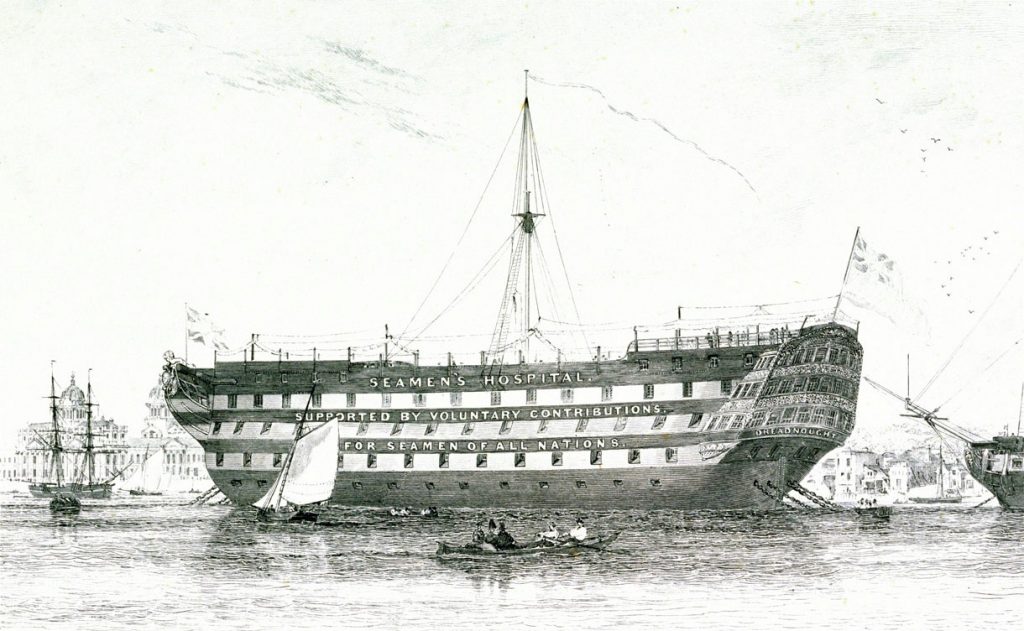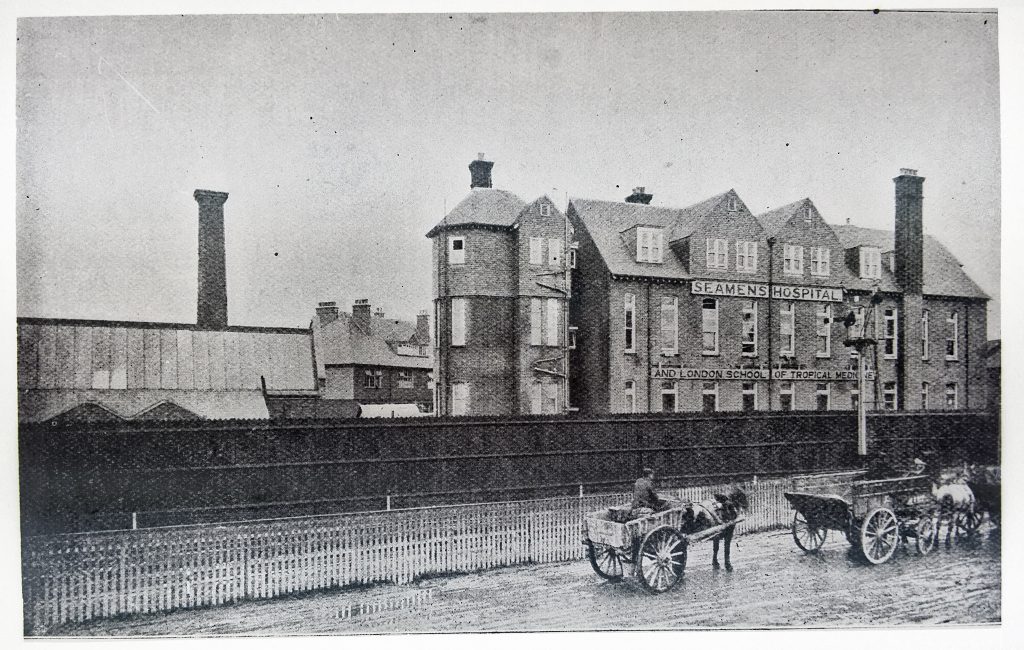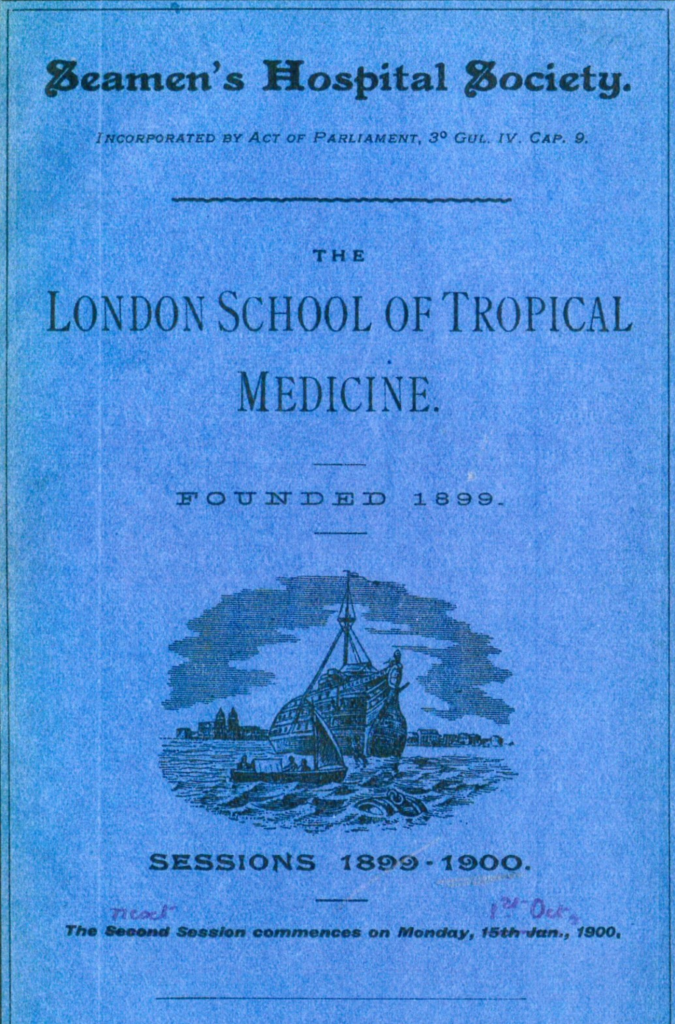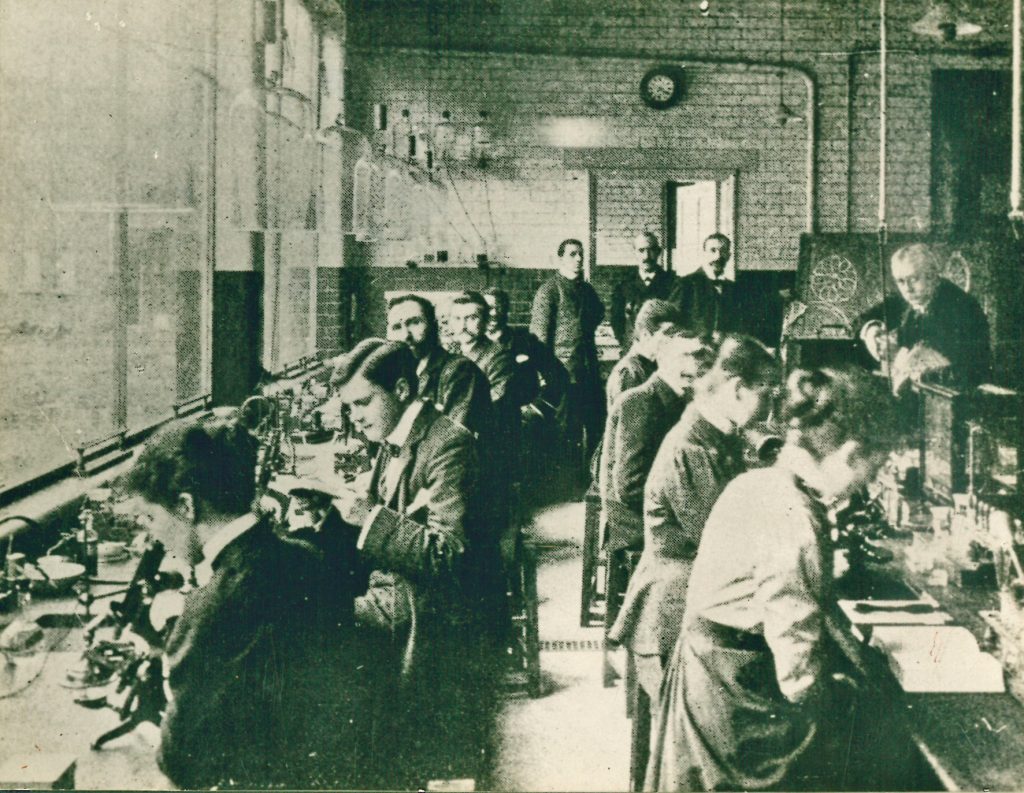125 years ago today, on 2nd October 1899, the School opened its doors to its first students. Here is a short history of how the School was established and what happened in our early years.
Seamen’s Hospital Society
The London School of Tropical Medicine, as it was called until 1924, began as part of the Seamen’s Hospital Society and was initially located at the Albert Dock Seamen’s Hospital, in London’s East End.
The Society dates back to 1821 and was borne out of the Wilberforce Committee as a charity to help people employed in the Merchant Navy or fishing fleets and their dependents. Their hospital was initially housed in quarantine ships moored on the Thames at Deptford.


In 1870 the Society was granted the lease to part of the Royal Greenwich Hospital and set up onshore as the Dreadnought Seamen’s Hospital. In 1890, the Society opened another branch at the Albert Dock.
Sir Patrick Manson
The School was founded by Sir Patrick Manson. Manson was a physician who worked in the Far East (including Taiwan and Hong Kong) from the 1860s-1880s. He encountered many tropical diseases there and was frustrated by his lack of knowledge. Manson retired to Britain in 1889 and set up his own practice in London. In 1892, Manson was appointed physician at the Albert Dock Hospital and began to formulate his ideas for a national school devoted to the study of tropical diseases.

Joseph Chamberlain
In July 1897 Manson was appointed Chief Medical Officer to the Colonial Office. Here he worked with Joseph Chamberlain was a high-profile businessman and influential politician, who was Secretary of State for the Colonial Office during the period of the School’s establishment.

In December 1897, a Colonial Office memorandum was circulated to all medical schools on the need for special education and research into tropical medicine. This was followed by a fundraising circular sent to colonial governors, stressing the importance of research into malaria and the need for a school to provide specialised training for Medical Officers. In 1898 the Colonial Office invited the Seamen’s Hospital Society Committee of Management to establish a School of Tropical Medicine in connection with their hospitals.
Links to colonialism
The School was founded during a time when Britain was at the height of its empire, when many of the men who went to work in the colonies from Britain were dying of tropical diseases which could have been treated if they knew more about these diseases. A number of initiatives have taken place to help the School understand and acknowledge its colonial legacy. This has included the employment of a research fellow in 2019 to look into LSHTM’s engagement with the British Empire and the influence of empire on the School’s governance, funding, education and research programmes. You can read the LSHTM colonial history report here.
London School of Tropical Medicine
The School opened on 2nd October 1899 with 27 students enrolled. Its objective was
‘not only to acquaint the student with the diseases of the Tropics and teach him how to treat the various ailments he may meet with but also to put him in the way of investigating tropical diseases, to train him to observe, to record and to study scientifically the great tropical disease scourges’ (Report for 1899-1900)
The proximity of the School to the docks allowed for the immediate admission of patients from returning ships for treatment, and for the observation and study of tropical diseases in their acute stages.


There was one course: the Diploma in Tropical Medicine & Health (DTMH), which ran for three months, with a final exam. Sessions ran three times a year: October to December, January to April and May to July. Over the course, students were taught about the geographical distribution, clinical history, diagnosis and treatment of a large number of tropical diseases and also about hygiene in the tropics. To take the course, it was necessary to be medically qualified, although the School Committee had the power to admit other applicants under special circumstances.
During its first year, 76 students attended the School. Students, both male and female, came from all branches of the profession including Medical Officers of the British and Indian Armies, the Royal Navy, Colonial Service, Foreign Office Service, Missionary Societies, railways, trading corporations and private practitioners. On leaving the School, students worked all over the world, with a large number working in Africa, Asia and the West Indies.

For further information on the history of the School or to find out more about the LSHTM’s Archives, please contact: archives@lshtm.ac.uk




